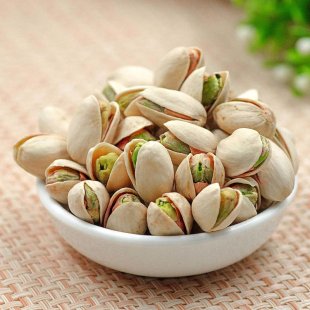
Pistachio is one of the most important types of nuts in Iran and the world. The pistachio tree with the English name Pistachio probably originated in Central or East Asia and has a variety of species. The types of pistachios cultivated in Iran belong to the domestic species with the scientific name of Pistacia vera. Double-stemmed pistachio trees mean that they produce male and female flowers on different trees, and on one tree, there are no both male and female flowers.
Types of pistachios in Iran
Here, try to mention this feature of the famous pistachio cultivars in the world according to the two important producing countries, namely Iran and the United States, and also explain a summary of the features of other posts in the producer of this product.
Important countries producing pistachios
Iran, the United States, Turkey, China, Syria, Greece, Italy, Afghanistan, Tunisia and Spain are the top 10 pistachio producing countries in the world
Due to the high domestic consumption of the United States, Iran is considered as the largest exporter of pistachios. Other pistachio producing countries include Madagascar, Australia, Kyrgyzstan, Jordan, Uzbekistan, Pakistan, Ivory Coast, Morocco and Mexico.
Types of pistachios in Iran based on appearance
As we said, the number and variety of pistachios in the world is very high and more than 60 types of pistachios have been identified in Iran. However, in short, Iranian pistachios can be divided into several types of pistachios: Akbari, Koleghoochi, Ahmad Aghaei, Badami and Fandoghi (or Ouhadi). Types of pistachios in Iran in terms of appearance are in two categories of Fandoghi and Badami pistachios, which you can get acquainted with each of them below.
Fandoghi Pistachio
One of the most famous pistachios in Iran is Fandoghi pistachio, which of course is also called ohadi pistachio. This type is called Fandoghi pistachio because it has a round and hazelnut-like appearance and is known in the world as round instead of Fandoghi pistachio. Usually in all the provinces where pistachios are grown, Fandoghi pistachios are also grown. From Kerman, Yazd and Khorasan Razavi to Fars, Markazi, Qazvin and even Tehran! But the center of pistachio cultivation is Kerman province.
Two cultivars of the famous types of pistachios are Fandoghi, Kaleghoochi and Ouhadi pistachio. Kaleghoochi pistachio is one of the most popular cultivars for export and Ouhadi pistachio is also known as the most famous type of pistachio in the country. This pistachio is harvested in mid-September, so you can find a new variety at the same time in fruit shops. The salty and dry type will be available to you a little later, in confectioneries, nuts stores.
Badami Pistachio
Another type of pistachio in the classification of pistachio types based on appearance is Badami pistachio. The main cultivar of this category is Zarand . Badami pistachio, which, as its name suggests, has its roots in Zarand city of Kerman. But Akbari, Ahmad Aghaei and Sefid Nogh pistachio cultivars (whose main planting site is Rafsanjan) are also in this category, each of which has a separate story and we will mention them later. Of course, it is said that the cultivation of this type of pistachio, which has an elongated and almond-shaped appearance, is now more in Khorasan than anywhere else in Iran. But Kerman and Yazd also cultivate this type of pistachio.
What is the unit of measurement for pistachios in Iran?
Pistachios can be measured with a unit called an ounce. But this measurement is really a specialized job and I and a non-specialist can not do much. However, it is not bad to know the generalities about this measurement:
First of all, the smaller the number of ounces, the larger the pistachio, and naturally, the larger the number, the smaller the pistachio. But there is one very important point to consider; No pistachios have been produced yet, all the seeds of which are the same size! It has not yet affected Indian and Chinese rice. For this reason, to measure different types of pistachio cultivars, they measure the size in a range. For example, Akbari pistachio, which is one of the largest types of pistachios in Iran, is between 22 and 24 ounces.
Characteristics of the most famous pistachio cultivars in Iran
Fandoghi : The shape of the fruit is spherical (hazelnut), the percentage of open mouth is very high, the color of the surface of the kernel is purple and the skin color of the shell is cream.
Kaleghoochi : hazelnut fruit shape, medium open mouth percentage, top color of kernel is red
gray and white shell is with medium opacity.
Ahmad Aghaei: The shape of an elongated rectangular fruit (almond), a high percentage of open mouthed, the color of the purple kernel and the color of the bone skin are very light.
Akbari: The shape of the almond fruit, high percentage of open mouthed, the color of the core of the kernel is purple-brown and the skin color of the bone is dark cream.
Unfortunately, there are no specific cultivars of the male tree in Iran, and males are usually classified in terms of early flowering, medium flowering, and late flowering. In Iranian gardens, the ratio of the number of male trees to the number of female trees is about 1 to 15 to 1 to 25.
Selection of pistachio base in pistachio cultivation
In pistachio cultivation, the choice of rootstock as the root system of the plant is very important.
In Iran, three bases of P. vera (domestic pistachio), P. khinjuk (Chatlanqush) and P. mutica (pistachio) are used for pistachio cultivation. The use of 2 stems of pistachio and chrysanthemum in Iranian pistachio orchards is very rare and in more than 99% of pistachio orchards in the country, domestic pistachio stems are used. The base of domestic pistachios grown in Iran is usually badami Zarand. After planting the base and reaching the age of transplanting, the famous cultivars are transplanted on it. One of the important characteristics of coriander rootstock is resistance to nematode producing pistachio root gland. It is said that the base of Chatlanqush has good resistance to drought.
In other countries of the world, the bases of P. terebintus, P. atlantica, P. integerrima, UCBI, PGI and PGII are used. The three bases UCBI, PGI, and PGII are the result of breeding programs and the cross between P. atlantica and P. integerrima.
P. atlantica rootstock is one of the most common rootstocks used in California due to its high cold resistance. The problem with this base is susceptibility to Vertilicium disease. Recently, the use of P. integerrima rootstock has been strengthened in breeding programs due to its resistance to Verticillium wilt disease.






User comments